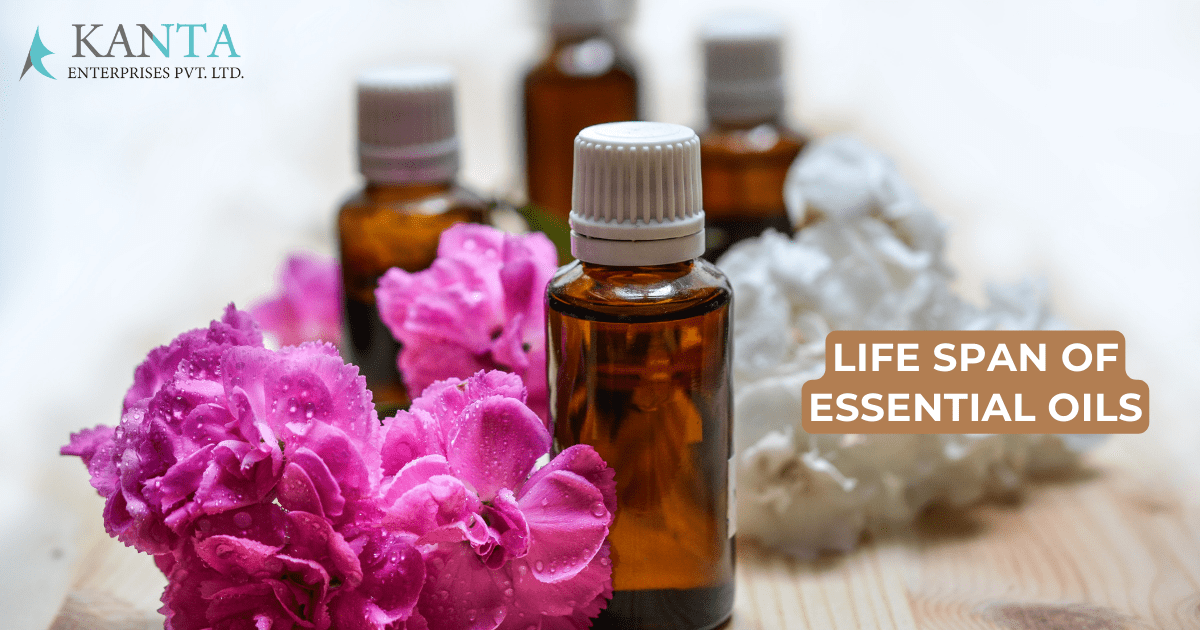One common question that we get quite often from our clients is, “How should we store essential oils for their maximum shelf-life?” Today, we will simplify the logic for you! Let’s start!
So, essential oils are produced using three widely used methods, i.e., steam distillation, solvent extraction, and cold press distillation. The extraction process varies as per different plant materials and desired end products. First, let’s understand these extraction procedures, and then we will carry forward to know about the precautions we need to keep in mind while storing essential oils.
Also Read: High-Quality Essential Oils for Beauty, Aromatherapy, and Wellness Sectors
Methods of Extracting Essential Oils
- Steam distillation is the most common method of extracting essential oils. In this method, plant material is placed in a still, and steam is passed through it. The steam causes the plant’s essential oils to evaporate. In the end, the steam carrying these essential compounds is condensed back into liquid form.
- Cold-Press Distillation:This method is commonly used in the extraction of essential oils from high-quality, ripened citrus fruits. After cleaning these fruits properly, the outer peel is mechanically pressed to rupture the oil-containing glands. The pressure applied during cold pressing extracts the essential oil along with other aromatic compounds from the outer, thick skin.
- Solvent Extraction: Solvent extraction begins by chopping and grounding the plant material, such as flowers or leaves, to increase surface area. This material is then soaked or mixed with a selected solvent, like hexane or ethanol, allowing it to dissolve essential oils and other aromatic compounds. After extraction, the solvent is separated from the plant material, typically through filtration or centrifugation. The solvent is then evaporated to concentrate the desired compounds, leaving behind a concentrated extract. The end product is what we call an “absolute.”.
Important Facts About the Longevity of Essential Oils
- Most steam-distilled essential oils generally have a shelf life of 3 years.
- Cold-pressed oils have the shortest shelf life, nearly 2–3 years.
- Absolutes have a shelf life of approximately 5 years.
But their shelf lives depend on the way we store them—quite literally!
Be it essential oils, carrier oils, or absolutes, it is always advisable to store them in dark-colored glass and airtight bottles that prevent them from coming into direct contact with sunlight or oxygen. When coming into direct contact with the environment, essential oils oxidize, and their effectiveness decreases faster.
Also Read: Manufacturer and Supplier of 100% Pure Essential Oils
At Kanta Enterprises, our clients don’t have to worry about the longevity factor of the essential oils. First things first, we use high-quality plant materials that yield potent essential oils. Secondly, our packaging is straight up to the alley of perfection, further decreasing the chances of spoilage. This is something you’ll be able to witness only when you get the hands-on feel of our products!
With that being said, if you’re a business looking for a trustworthy B2B brand that has been in the manufacturing and exporting of essential oils and carrier oils, do ping us!
We look forward to catering to your requirements and serving you with sincerity. For further inquiries, please reach out to us at info@kantaessentialoils.com.
Related Blog:
Unlocking the Power of Nature: Exploring the Benefits of Our Natural Essential Oils







